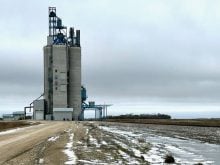Farmers planted more canola and special crops than they anticipated earlier this year after strong prices in April and May drew acres away from barley, oats and flax.
In a survey released last week, farmers told Statistics Canada they planted 13.3 million acres of canola, up from the 12.8 million acres they were thinking about seeding earlier in the spring.
Greg Kostal, analyst with Pro Farmer Canada, noted the survey was done before frost prompted some farmers to reseed, sometimes with barley, so final acreage numbers may be somewhat lower.
Read Also

Farmland ownership fires up Saskatchewan politicians
Saskatchewan politicians debate the enforcement of farmland ownership laws in the province.
But yield pro-spects will determine how prices move, he said. Recent rains have improved those prospects, although they haven’t made up for dry conditions earlier this summer, he said.
For canola prices to move higher, Kostal said U.S. grain traders need to start worrying about excessive heat in major midwestern grain producing states.
A heat ridge has been floating around Texas and Florida, and traders in Chicago have been nervously watching its progress.
Follow soybean price
Canola values tend to closely track price movement in soybean and soybean oil, set at the Chicago Board of Trade.
Without major production problems, Kostal sees prices dropping by $15 to $20 per tonne.
He has advised his farmer clients to be 40 percent sold on new crop, and watch volatile markets daily for pricing opportunities.
The Statistics Canada survey also showed Prairie farmers planted about 36,000 more acres of spring wheat and 80,000 more acres of durum than they first intended.
Flax acres dropped by 150,000 acres from farmers’ March intentions, and oats fell by about 300,000 acres. They also left fewer acres for summerfallow than originally forecast.
Falling barley prices in April and May led farmers to drop one million acres of that cereal from their plans.
Kostal expects current barley prices to drop by $5 to $10 per tonne toward the end of the crop year as farmers who see their crops doing well send remaining old crop stocks to market.
But because of the smaller than expected barley crop, he said farmers might be able to look forward to a $10 to $15 per tonne rally in the winter if buyers are caught short during a cold stretch.
Saskatchewan growers changed barley acres to lentils and canaryseed, said Kostal. Lentil prices rallied in May, and growers perceive it as being more resistant to drought.
“You start doing the economics of 18 cents a pound lentils, and they went for it.”
Brian Clancey, analyst with Stat Publishing, said buyers were confident farmers would plant 800,000 acres of lentils or less. But the survey showed a 19 percent increase over last year at 965,000 acres.
Much of the extra acreage will be lairds, Clancey said.
Depending on yields, farmers will add about 193,000 tonnes of canaryseed to carry-in stocks of around 100,000 tonnes.
“There’s just going to be gobs of canaryseed out there,” he said, explaining total use will likely be around 150,000 tonnes.
But if Canadian farmers store it rather than sell at low prices, he doesn’t expect the market to bottom out.
“That’s the advantage of being the primary supplier in the world of canaryseed: (growers) can control the market sometime.”














